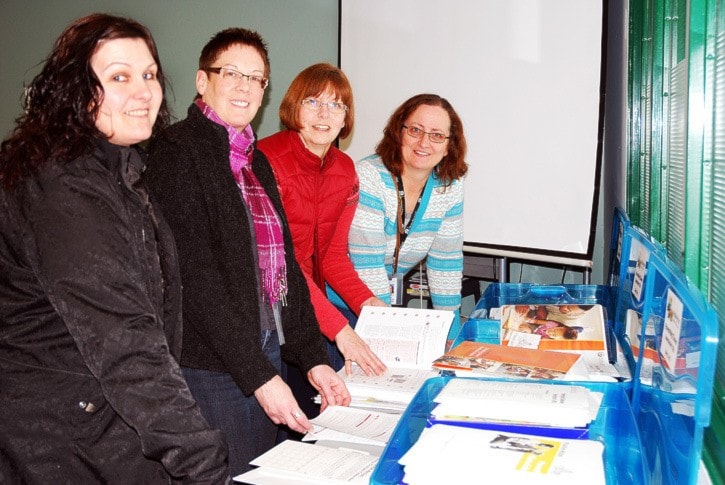The Positive Action program initiated by Williams Lake Communities That Care is expanding from its school-based roots out into the community.
Positive Action was implemented at Anahim Lake school in September and at Cataline, Nesika and Marie Sharpe elementary schools in Williams Lake starting in November.
Now Communities That Care is working to expand the program to organizations in the greater community that work with children, youth and families.
Representatives from the Child Development Centre, Axis Family Resources, community nursing, Boys and Girls Club, and other groups attended a presentation on the Positive Action program Friday at the Women’s Contact Centre.
Participants were updated on how the program is being received in schools and were given an opportunity to view the Positive Action curriculum kits that will be available for loan to community groups at the Women’s Contact Society office.
Positive Action is a program that has been developed and used extensively in the U.S. and countries around the world to increase positive behaviours and decrease negative behaviours among children and youth in schools and communities.
The program teaches that you feel good about yourself when you do positive actions and there is always a positive way to do everything.
In the program students and teachers spend the first 15 minutes of each day in activities and discussions around a key word. There is one key word for each week of the school year.
The concept seems very simple but a great deal of work has been put into developing the Positive Action curriculum, says Monica Johnson of the Boys and Girls Club, who spearheads the project with Vanessa Riplinger from the Child Development Centre, Amanda Worthington from Axis Family Resources and Jan Fichtner from School District 27.
The Positive Action curriculum guides are well planned, easy to follow and include all the needed educational materials, which makes it a very user friendly program, Johnson said.
Each Positive Action kit contains an instructor’s manual with approximately 140, 15-minute scripted lessons, along with prepared materials such as posters, puppets, games, music, stickers, and activity sheets or booklets and other manipulatives for 30 students.
The lessons in each grade are age-appropriate and use a variety of methodologies such as stories, poems, role-playing, plays, co-operative learning, games and discussion.
Fichtner said one teacher explained that the 15 minutes of activity starting each day sets a positive tone in the classroom for the whole day, which is reflected in fewer discipline problems. The program also fits into requirements in the school curriculum for health and career development.
She says the Positive Action program has been used in the U.S. and countries around the world with proven success in improving school attendance, improving academic achievement, and preventing problem behaviours such as bullying, violence, gang involvement, and alcohol, drug and tobacco use.
“Positive Action is an evidence-based program to build strong, capable, and resilient children,” Fichtner said. “We can’t fix children or families but we can teach them skills to more effectively manage their own world.” There are also supplementary kits for bullying prevention, pre-Kindergarten, family and parenting, Grade 5 and middle school drug education kits, elementary and secondary school climate development, conflict resolution; counsellor program; and a community kit.
Fichtner said the Positive Action program will be expanded to schools in 100 Mile House next year and eventually to all schools in the district.
Communities That Care has also initiated the Roots of Empathy program in schools which gives children opportunities to interact with babies brought into the schools by their parents to visit with children.
The Social Planning Council of Williams Lake and Area initiated the Communities That Care projects after a survey of youth released in 2009 indicated that youth in this region are at high risk for substance abuse, crime, violence, teen pregnancy, school drop out, as well as depression and anxiety.
